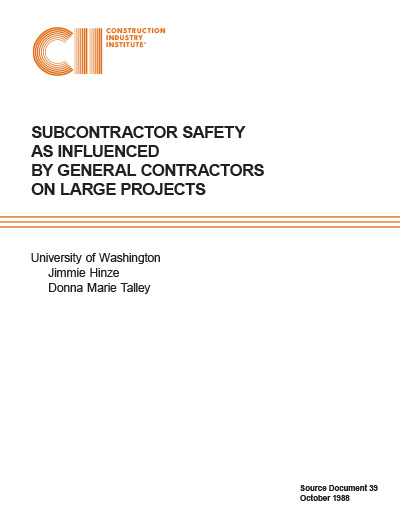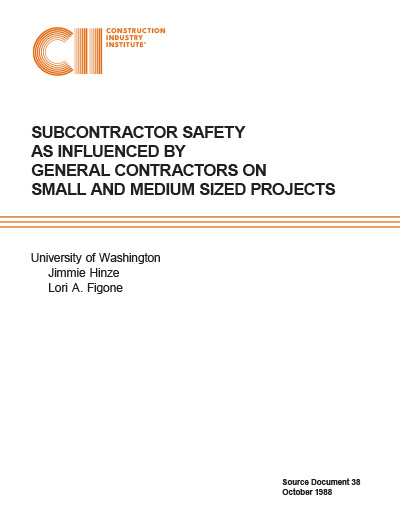
Indirect Costs of Construction Accidents
It is important for contractors to know the magnitude of the true costs of injuries. Contractors should track these costs on their own projects. Contractors could also utilize the values generated by this study to help properly allocate the true costs of worker injuries to their projects, i.e., the costs of injuries are too high to simply absorb them in an overhead account. A direct charge to the projects for worker injury costs would help all parties concerned focus more attention on the importance of safety. This direct charge approach could be implemented by simply charging a specified or pre-set amount for injuries of differing severity. The amount charged would most appropriately be an estimate of future costs associated with injuries, such as the claims costs. These costs may actually be incurred after project completion and would therefore not be properly charged if the allocation were deferred until final settlement. This procedure would send a message throughout the project that injuries are costly and that the firm is concerned about them. If this were more universally practiced by the construction industry, the industry as a whole would become more sensitive to the true costs of injuries and consequently, greater attention would be given to safety. Another approach may be to establish a fund against which all injuries are charged. Any residual amounts remaining at project completion would be used as bonuses or other positive reinforcement mechanisms. Thus, larger bonuses would be assured on projects with good safety records.
Owners also must be concerned about safety. Ultimately, they pay for the costs incurred through injuries. Indemnification provisions in construction contracts are not an efficient means of addressing this issue and are not legally binding in several state jurisdictions. Owners should be proactive on safety by using safety records as one of the selection criteria for construction contractors. Owners would be wise to refuse to enter into contracts with construction firms that do not have a demonstrated record of safe performance. Various programs, as implemented by the owner, can send a message to construction contractors about the costs of injuries and the value or importance that the owner places on safe projects.
Information generated by this research effort should not be ignored. Construction contractors and owners must be aware of the staggering costs associated with worker injuries. This information should be disseminated through extensive education and awareness programs.



